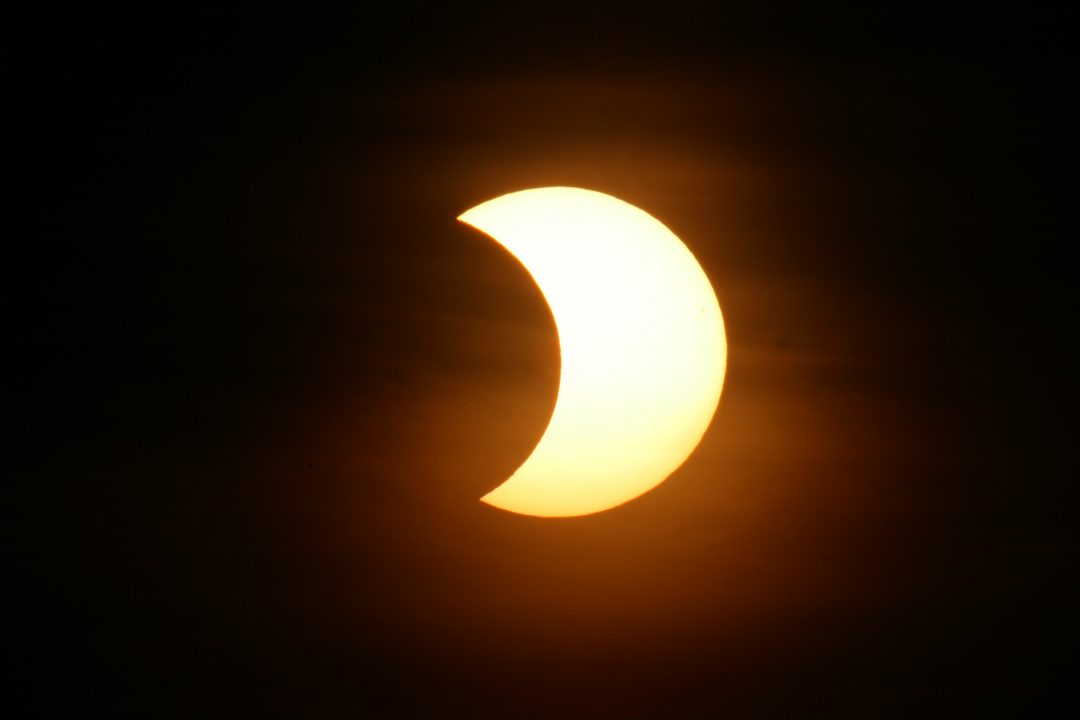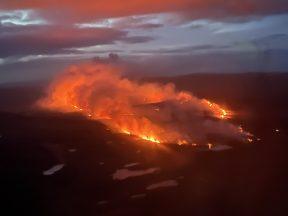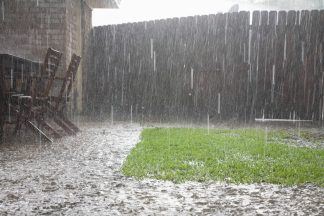North America will be treated to a total solar eclipse on Monday, plunging into darkness during the daytime.
The rare occurrence will see many flocking to catch a glimpse of the Moon completely covering the Sun as they stand in the darkest part of the Moon’s shadow.
For Scotland, its first partial solar eclipse since 2022 when around 35% of the Sun was obscured by the Moon in the north east of the country.
What is a total solar eclipse?
An eclipse of the Sun occurs when the Moon moves directly between the Sun and the Earth.
During a solar eclipse, the Earth is basically in the Moon’s shadow.
Because the Moon is much smaller than the Earth, its shadow only covers a small area of the Earth’s surface. Any solar eclipse therefore will only be visible from certain parts of the planet.
Can the UK expect to see the solar eclipse?
Unfortunately, the total solar eclipse will not be visible from the UK and Ireland. However, a partial solar eclipse – where a little bit of the Sun is covered, and a small percentage is blocked out by the Moon – may be visible close to sunset, between about 7.50pm and 8.50pm
Where in the UK can I see a partial solar eclipse?

Monday’s solar eclipse will see up to 38% of the Sun obscured on the western side of North Uist, but just 3% in Dunbar and 4% in Aberdeen. About 6% of the Sun will be obscured in Edinburgh and 12% in Glasgow.
The path of the totality – where the eclipse will be fully visible – crosses the Atlantic and parts of eastern Canada and the US.
There are two things working against us for this eclipse, and that’s extensive cloud cover which will spread in from the south today with much of the country under cloud by the time the eclipse begins. The other thing is the timing of this eclipse.


First contact occurs just 15-20 minutes before sunset which means you need to have a very clear view of the western horizon – so either a hill or a view from the west coast is the most ideal spot to see it.
The good news though is the areas with the maximum eclipse in Scotland such as the Western Isles will hold onto cloud breaks until a bit later this evening meaning we’re in with the best chance of seeing something here.
One word of warning, this is a very small solar eclipse which means most of the Sun will still be exposed. This should only be viewed using eclipse glasses or using a pinhole viewer. Although as the Sun will be setting, it may be that it is too weak to project properly.
What do skygazers need in order to be able to see the phenomenon?
-
 Looking directly at the Sun is dangerous
Looking directly at the Sun is dangerous -
 The eclipse can be viewed safely through real solar eclipse glasses
The eclipse can be viewed safely through real solar eclipse glasses -
 The safest and one of the cheapest and most convenient ways to view the event is by pinhole projection
The safest and one of the cheapest and most convenient ways to view the event is by pinhole projection -
 Make a hole in a piece of card, hold it under the Sun, and hold a piece of paper behind the card
Make a hole in a piece of card, hold it under the Sun, and hold a piece of paper behind the card -
 Using this method, people should be able to see the shape of the Sun projected onto the paper
Using this method, people should be able to see the shape of the Sun projected onto the paper
When is the next solar eclipse?
The next partial solar eclipse should be better as it occurs during the morning on March 29, 2025, and there will be up to 50% of the Sun obscured in the far north west.
The next solar eclipse which will be noticeable to all of us will be the one on August 12, 2026 when as much as 93% of the Sun will be eclipsed in the Western Isles.
This is enough to have a noticeable dimming effect on the ground, even if we cloudy skies. This is as close to a total eclipse we’ll see from Scotland until the next one in the year 2135.
Follow STV News on WhatsApp
Scan the QR code on your mobile device for all the latest news from around the country
























